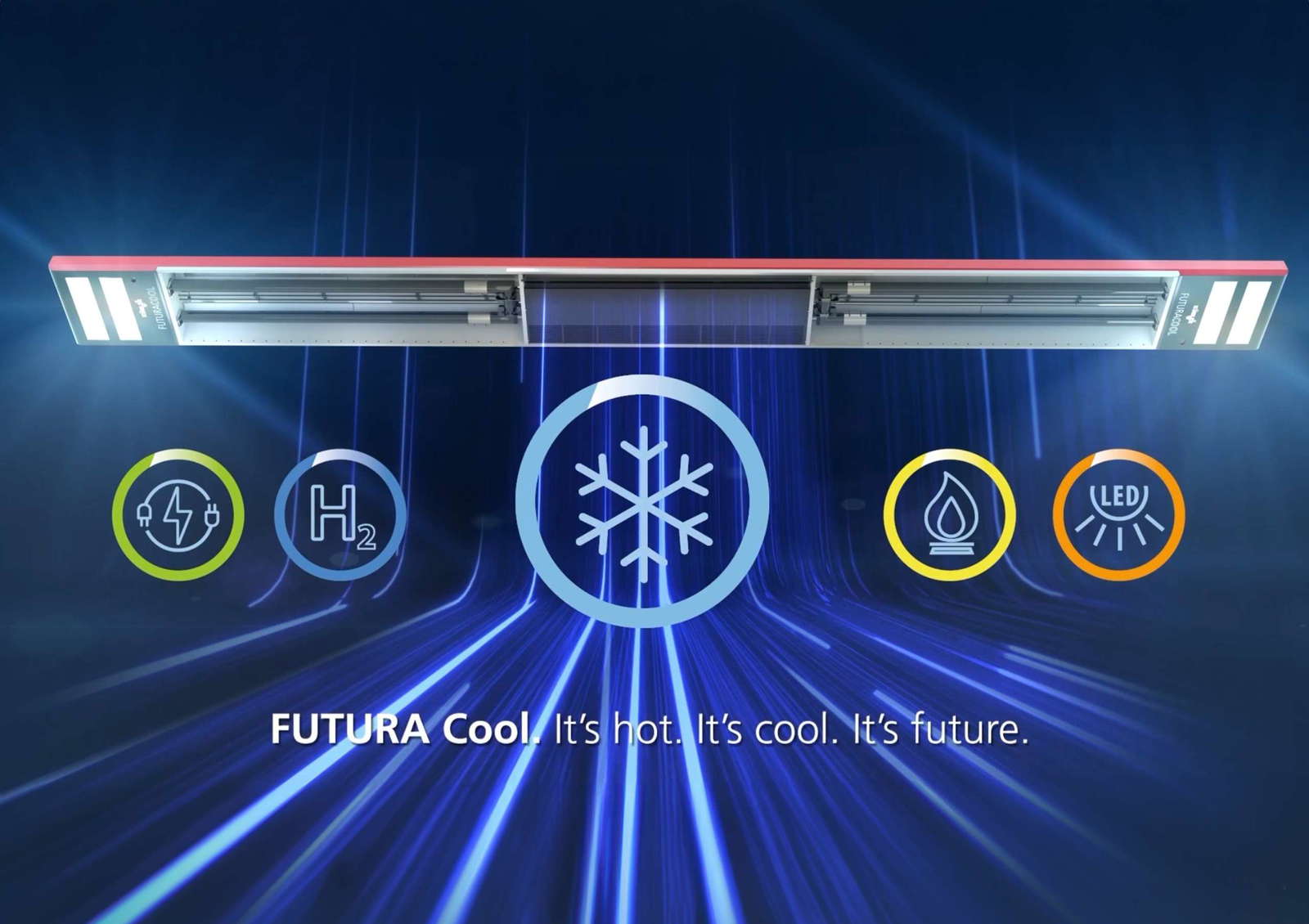New law highlights the efficiency of decentralized infrared heating systems - GEG comes into force on 01.11.

The Building Energy Act (GEG) will regulate energy requirements and the use of renewable energies for heating and cooling. This applies to both new and existing buildings. It replaces the previous regulations EnEV, EEWärmeG and EEG. When the GEG comes into force on November 1, 2020, these laws will be a thing of the past.
"And that's a good thing," says Thomas Kübler, Managing Partner of KÜBLER GmbH. According to KÜBLER, it has taken 11 years - from 2008/2009 to the present day - to correct the technical errors in the legislation in terms of openness to technology. The creators of the EnEV, EEWärmeG and EEG at the time focused on substitution with renewable energies and therefore on hydraulic systems, which are significantly less efficient and suitable in this respect. The issue of energy efficiency as the second central pillar of the energy transition was simply overlooked. "There was a failure to take a differentiated view of non-residential buildings. Due to their ceiling heights, hall buildings are subject to completely different physical and therefore heating requirements than kindergartens, for example," explains KÜBLER. Although this differentiation was supplemented with the new versions of the EnEV and EEWärmeG, it took until 2020 to open up the legislation to high-efficiency technologies such as decentralized infrared heating.
"This is really good news for building owners, especially in the area of new builds. The GEG finally takes into account energy-efficient technologies that achieve more and are more economical at the same time."
says Thomas Kübler. With the new law, heating technologies can now also be used without any problems, which are clearly superior not only in terms of energy efficiency but also in terms of ease of use. In addition, there is another welcome effect: "From an overall economic perspective, operators of hall buildings now have many more design options available to them to achieve energy efficiency in their companies. And at significantly lower investment costs."
For years, affected companies and associations have been fighting for the revision of the EEWärmeG. A uniform, coordinated set of regulations for the energy requirements for new buildings, existing buildings and the use of renewable energies for heating and cooling was called for. The regulations were intended to bring together the various laws on building energy efficiency and heat use and significantly simplify the previously highly complex and difficult to understand landscape of energy-saving legislation for building owners and planners. Drafts of this law have been available since 2017. After endless postponements over legislative periods, the GEG was adopted on June 18 based on the recommendation of the Committee on Economic Affairs and Energy in the Bundestag with the votes of the CDU/CSU and SPD. The Bundesrat approved the law on July 3. With its publication in the Federal Law Gazette on August 13, it is now clear that the GEG will enter into force on November 1, 2020.
"Now we finally have a regulation that is open to all technologies and no longer excludes highly efficient systems that are tailored to the specific requirements of large room heating simply because the designers have worked in an undifferentiated manner," says KÜBLER. The guiding principle "Efficiency first" is finally gaining in importance. In concrete terms, this means When the GEG comes into force, hall buildings or zones with a room height of more than 4 meters that are heated with decentralized technologies such as infrared radiant heating will be exempt from the obligation to use renewable energies.
-
High halls - high energy consumption. It's worth taking a closer look. If you want to know where energy is being wasted, you need transparency. A clear view of whether and where heat is being wasted and thus causing unnecessarily high costs and emissions. By leaving hall doors open for too long, for example. By heating unused hall areas. Or through suboptimal heating times. A smart tool from the hall heating specialist KÜBLER now provides clarity: the EMMA heat management system, which ensures reduced costs, less CO2 and greater efficiency in industrial heating processes.
-
Energy savings of up to 70 % - with these values, KÜBLER heating systems are perhaps one of the most effective levers for reducing primary energy consumption, CO2 emissions and costs in the hall sector. Depending on the project, this can amount to annual savings of €300,000 and more. A sum that can be used for design. Because it offers financial freedom. For architectural innovations. For further beneficial measures on the building structure. The innovation leader presented its latest developments at ISH 2019 in Frankfurt.
-
With around 90 employees, eepos is one of the industry leaders in the field of ergonomic workplace equipment and has branches on five continents. The core of the eepos portfolio consists of smooth-running aluminum crane systems based on a modular principle. In the automotive and mechanical engineering industries, these have become the quasi-standard for innovative lifting solutions in the range up to two tons. With a new highly efficient infrared hall heating system from KÜBLER, eepos is marking the [...]
-
Ludwigshafen, 19.06.2020 | The Building Energy Act, or GEG for short, has long been eagerly awaited. The uniform, coordinated set of regulations for the energy requirements for new buildings, existing buildings and the use of renewable energies to supply heating and cooling to buildings is intended to bring together various laws on building energy efficiency and heat use. And thus significantly simplify the previously highly complex and difficult to understand landscape of energy-saving legislation for building owners and planners. Drafts of the law have been available since 2017. After endless postponements over legislative periods, the GEG was passed yesterday in the Bundestag.






